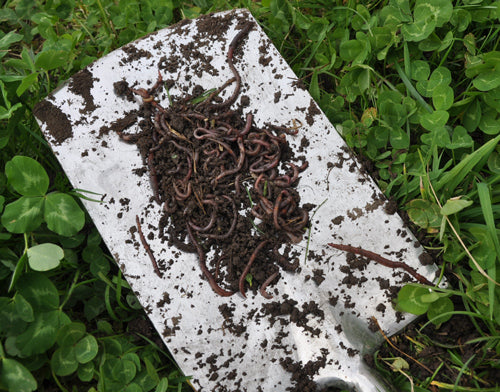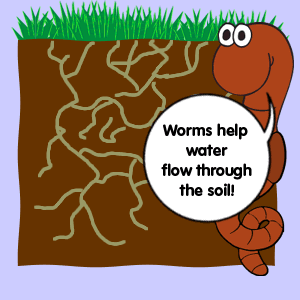Things about North Carolina Worms
Things about North Carolina Worms
Blog Article
The 5-Second Trick For North Carolina Worms
Table of ContentsNot known Facts About North Carolina WormsThe Best Guide To North Carolina Worms5 Easy Facts About North Carolina Worms ShownThe 4-Minute Rule for North Carolina Worms
Instance: 1-gallon of worm castings to 4 gallons of potting mix. Do NOT utilize a potting mix that has chemical fertilizers in it. Check out the labelit will certainly say. 1/2 mug in the bottom of the growing hole for smaller plants. 1 mug for larger plants. ie. tomatoes, environment-friendly peppers, summertime squash, and the like.
The addition of tea can additionally add enhanced microbial biomass to your dirt. You can constantly side-dress your plants with worm castings at any moment. Simply keep in mind, the microorganisms will certainly die if exposed to UV rays (Sunlight), so make sure to cover the spreadings with an inch approximately of soil.
This baffled them for years up until the screening techniques came to be better. It would certainly get much better(with more castings), degree off, and then decrease. Also numerous worm spreadings would speed up the development to a pace that the plant might not recoup from.
9 Easy Facts About North Carolina Worms Shown
I have stated the merits of worm spreadings for regarding 2000 words. Worm spreadings are no various. It takes time to produce high quality worm castings.
Worm spreadings definitely cost even more than chemical fertilizers. Worm spreadings are on the more affordable end of organic fertilizers. (50 gallons per year) It is a much tougher and extremely costly investment to produce big amounts of worm spreadings.

Producing a healthy dirt might be the greatest advantage of worm spreadings. Healthy dirt was gone over and exactly how important this has actually ended up being to everyone. The leading ten advantages of worm spreadings were additionally offered. We went over worm spreadings NPK and also the proper nutrient evaluation that ought to relate to worm castings.
A Biased View of North Carolina Worms
Finally, we spoke about several of the drawbacks connected with worm spreadings. I covered a lot of product in this article. There are a great deal of web links (inner and outside). If you would like more info on a certain subject, please click through the links to read more. As constantly, do not hesitate to comment or ask inquiries.
The upright burrows are commonly open, although the worms cover the leading with deposit and excrement. Roots need oxygen for their development, whereas they generate carbon dioxide that requires to leave the soil.
Earthworms enhance porosity by two mechanisms: (1) by developing irreversible burrows, and (2) by boosting soil aggregation. Aggregation is boosted by the blending of dirt and raw material in the earthworms' digestive tracts. Lenoir NC Worms For Sale. These extremely secure aggregates are deposited by some earthworms in their burrows, and by others at the surface area of the dirt


In one more research study, earthworms were approximated to eat 4 to 10 percent of the leading 6 inches of the soil annually. Soil compaction decreases the porosity of the soil.
Not known Factual Statements About North Carolina Worms
Regular earthworm populaces can quickly take in 2 lots of dry matter per acre per year, partly absorbing and blending it with soil. The importance of earthworms to mix surface residue with soil becomes very clear in dirts that do not have any type of earthworms. Most of our Pennsylvania dirts contend least some earthworms, and the effect of their full lack, as a result, can not be noted.
(https://www.ask-directory.com/North-Carolina-Worms_411158.html)In these dirts, the development of topsoil with reasonable raw material material did not happen, leading to inadequate plant development. As soon as the reason was developed, the federal government of the Netherlands began a project to present earthworms. After the intro of the earthworms, a dark topsoil layer was created, and plant development raised substantially.
They live primarily from partially broken down organic matter that is already incorporated in the soil. They consume their means via the dirt, producing horizontal burrows that they fill up with their excrement. These species ingest huge quantities of dirt that they blend with digested plant deposit in their intestines. or anecic types reside in permanent vertical burrows that can be 5 or 6 feet deep.
Their burrows stay open, although they top the top with plant deposit that they draw to the entry. These types consume significant quantities of soil that they blend with absorbed deposit in their intestines. Their waste matter is mostly deposited at the surface area of the soil. The nightcrawler Lumbricus terrestris is the most noticeable member of this group.
Report this page